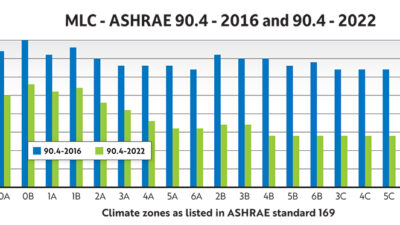When the Florida Building Code goes into effect in Miami-Dade County on Jan. 1, 2002, a controversial new ordinance will permit building owners to hire architects and engineers to perform plan reviews and inspections—services traditionally provided by building officials.
When the Florida Building Code goes into effect in Miami-Dade County on Jan. 1, 2002, a controversial new ordinance will permit building owners to hire architects and engineers to perform plan reviews and inspections—services traditionally provided by building officials.
While the ordinance might speed up permitting, a process which can take as long as five months, some designers are concerned that taking the building official—an independent third party—out of the picture may create a conflict of interest.
“Is the owner who pays an engineer or architect going to get them to bend a little more than they should?” asks Leonard Hayet, P.E., a managing partner with Smith Korach Hayet Haynie Partnership, Miami, Fla. “It’s a question of the ethics.”
Additionally, architects and engineers are weary of the risk they would incur by signing off on these reviews and inspections.
“The state code puts all the responsibility for compliance on the engineer and the architect, and gives immunity to the building owner,” notes Rod Rodriguez, P.E., C3TS, Coral Gables, Fla., who also serves as the president of the Florida Engineering Society.
Similarly, Rafael Sixto, AIA, Spillis Candela DMJM, Coral Gables, Fla., and president of the American Institute of Architects’ Miami chapter comments, “The language of the permit is very onerous and unless one is on the job 100% of the time, it is difficult to sign such an affidavit.”
Further, it may be difficult for A/E firms to obtain the level of insurance coverage necessary to take on this kind of work, says Rodriguez.
Some organizations, like AIA, have suggested alternative approaches such as the county collecting permit fees which would be used to compensate a pool of designers offering these services to building owners. That way the owner wouldn’t wield monetary influence over the architect or engineer.
However, Rodriguez points out, “A pool of A/Es is very difficult because people have different kinds of expertise with different building systems and facility types.”
Another suggestion would be to simulate the system that is in place in New York and Chicago where the architect or engineer who designs a project is also given permission to certify plan reviews.
“In New York and Chicago, there is no conflict of interest because the designer is liable for the design anyway,” explains Sixto.



